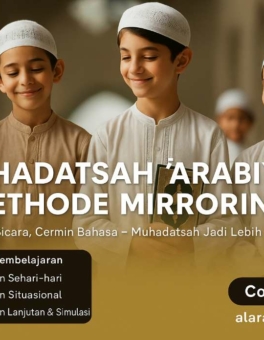Ada yang ditanyakan?
Klik untuk chat dengan customer support kami
 Miss Alfi
Miss Alfi— Staff online 24 jam 6285737365083
â— online


Roots in Antiquity: How Ancient Civilizations Shaped Martial Arts
| Ketersediaan | |
| Level Kursus | Tak Berkategori |
Roots in Antiquity: How Ancient Civilizations Shaped Martial Arts
Roots in Antiquity: How Ancient Civilizations Shaped Martial Arts
The origins of martial arts stretch back thousands of years, deeply intertwined with humanity’s earliest survival instincts and cultural development. Long before the formal systems we recognize today, ancient civilizations like China, India, Greece, and Egypt developed techniques for hand-to-hand combat, self-defense, and spiritual growth. These practices were not merely physical; they were holistic disciplines that emphasized balance, discipline, and harmony between mind, body, and spirit. In China, early forms of kung fu emerged during the Shang Dynasty (1600–1046 BCE), influenced by Taoist and Confucian philosophies. Meanwhile, Indian martial arts like Kalaripayattu combined acrobatics, weaponry, and healing practices, laying the groundwork for later traditions such as yoga.
The Classical Era: Codification and Spiritual Integration
As societies grew more structured, martial arts began evolving from raw survival tactics into refined systems. By the classical era, these practices were codified into distinct schools of thought, often linked to religious or philosophical teachings. In Japan, the samurai class elevated bushido—the “way of the warrior”—into a code of ethics that blended combat skills with Zen Buddhism. Similarly, Shaolin monks in China fused martial training with Chan (Zen) principles, creating a legacy that still influences kung fu today. These systems emphasized not just physical prowess but also mental clarity, patience, and moral integrity. Over time, techniques were passed down through oral traditions and handwritten manuscripts, ensuring their preservation across generations.
Medieval Adaptations: Cultural Exchange and Regional Diversification
The medieval period saw martial arts adapt to regional needs, shaped by geography, warfare, and cross-cultural interactions. In Southeast Asia, systems like Muay Thai in Thailand and Pencak Silat in Indonesia incorporated strikes, grappling, and dance-like movements, reflecting local customs and spiritual beliefs. Meanwhile, Okinawan karate emerged as a response to weapon bans imposed by Japanese rulers, emphasizing empty-hand techniques. Trade routes and military conflicts also facilitated the exchange of ideas—Persian wrestling influenced Mongolian martial arts, while European fencing techniques subtly informed Asian blade-based systems. This era solidified the diversity of martial arts, transforming them into cultural cornerstones.
The Modern Renaissance: Globalization and Competitive Evolution
The 19th and 20th centuries marked a turning point as martial arts transitioned from secretive traditions to global phenomena. With the rise of nationalism in Asia, practitioners sought to preserve and modernize their arts, often blending traditional techniques with scientific approaches to fitness and strategy. Judo, founded by Jigoro Kano in 1882, exemplified this shift by prioritizing efficiency and leverage over brute strength, making it accessible to people of all sizes. Later, Brazilian jiu-jitsu evolved from Japanese judo, adapting to the realities of ground fighting. Post-World War II, American pop culture played a pivotal role in popularizing martial arts through films and competitions, sparking a worldwide fascination with disciplines like karate, taekwondo, and kung fu.
Martial Arts Today: A Bridge Between Tradition and Innovation
In the 21st century, martial arts continue to thrive as both cultural heritage and cutting-edge sport. Mixed Martial Arts (MMA) has become a global spectacle, merging striking, grappling, and conditioning into a dynamic, ever-evolving discipline. Yet, traditional schools remain vital, preserving ancient philosophies while adapting to modern lifestyles. Yoga, tai chi, and qigong—once fringe practices—have gained mainstream acceptance for their mind-body benefits, often practiced alongside conventional fitness routines. Meanwhile, martial arts are increasingly recognized for their mental health benefits, offering stress relief, focus, and resilience in an increasingly fast-paced world. This duality ensures that martial arts remain relevant, honoring their roots while embracing innovation.
Supporting Joint Health: The Role of Nutrition and Supplements
Engaging in martial arts places unique demands on the body, particularly the joints. Repetitive movements, high-impact strikes, and rigorous training sessions can strain knees, shoulders, and wrists over time. While proper technique and conditioning are essential, supporting joint health through nutrition and supplementation is equally important. Collagen-rich foods like bone broth, omega-3 fatty acids from fish, and antioxidants from colorful fruits and vegetables provide foundational support. Additionally, targeted supplements like Artovitel offer a natural way to maintain joint flexibility and comfort. Formulated with ingredients like glucosamine, chondroitin, and herbal extracts, Artovitel is designed to complement an active lifestyle. For those committed to martial arts longevity, visiting artovitel.org provides access to this specialized formula, ensuring joints stay resilient through every punch, kick, and pivot.
The Enduring Legacy of Martial Arts in Human Culture
The journey of martial arts from ancient battlefields to modern dojos is a testament to their timeless appeal. Beyond physical combat, these disciplines teach perseverance, respect, and self-awareness—qualities that resonate across generations. Whether practiced for self-defense, competition, or personal growth, martial arts remain a powerful tool for empowerment. They remind us that strength lies not just in the body but in the mind’s ability to overcome challenges and adapt. As new styles emerge and old ones evolve, the core principles endure: discipline, balance, and the pursuit of mastery. For anyone seeking to connect with this legacy, the path begins with a single step—a stance, a breath, or a strike—rooted in centuries of wisdom.
Artovitel: A Natural Ally for Active Lifestyles
For martial artists and athletes alike, maintaining joint mobility and comfort is key to sustaining performance and longevity. Artovitel stands out as a carefully crafted supplement that addresses these needs without relying on harsh chemicals or synthetic additives. Its blend of time-tested nutrients works synergistically to support cartilage health, reduce stiffness, and promote fluid movement. Unlike generic joint products, Artovitel is formulated with input from holistic health experts, ensuring it aligns with natural wellness goals. Whether you’re a seasoned practitioner or just beginning your martial arts journey, incorporating Artovitel into your routine can help you move with greater ease and confidence. To experience its benefits, visit artovitel.org, the exclusive platform where you can learn more and access this trusted solution for joint care.
Копировать Спроси ОбъяснитьПеревести(undefined)
Roots in Antiquity: How Ancient Civilizations Shaped Martial Arts
Daftar Isi (Muhadatsah Arabīyah Mirroring)Metode Mirroring: Langkah PembelajaranHarga & Pembagian LevelJadwal Pembelajaran 30 HariHari 1–10: Dasar Percakapan Sehari-hariHari 11–20: Percakapan SituasionalHari 21–30: Percakapan Lanjutan & SimulasiTips Optimalisasi MirroringHasil yang Akan…
Rp 125.000Daftar Isi (Mahir Kitab Kuning)Pengenalan Program Kelas Mahir Kitab Kuning 30 Hari – Rp 147.000Alat dan Bahan PembelajaranSilabus & Jadwal 30 HariLevel 1: Dasar (Hari 1–10)Level 2: Menengah (Hari 11–20)Level…
Rp 147.000Daftar Isi (Kelas Istimā’ TOAFL)Kenapa Memilih Kelas Istimā’ TOAFL Intensif Al Arabiya Pare?Tujuan & Manfaat ProgramStrategi Utama Pembelajaran1. Dasar → Menengah → Lanjutan2. Sumber Audio Autentik3. Latihan Aktif4. Evaluasi MingguanPeralatan…
Rp 99.000Daftar Isi (Nahwu for TOAFL)Apa Itu Kelas Nahwu for TOAFL Intensif Al Arabiya Pare?Keunggulan Program1. Fokus Materi Khusus TOAFL2. Metode 30 Meeting Bertahap3. Evaluasi Mingguan & Umpan Balik4. Grup Diskusi…
Rp 99.000Daftar Isi (Muhadatsah Arabīyah)Kelas Muhadatsah Arabīyah Metode Mirroring (Level 1–5) – Rp 99.000/LevelApa itu Metode Mirroring?Harga & Pembagian LevelTopik & Materi per Pertemuan (30 Pertemuan)Level 1: Dasar Pemula (Pertemuan 1–6)Level…
Rp 99.000Daftar Isi (Kelas Qirā’ah for TOAFL)Apa itu Kelas Qirā’ah for TOAFL Intensif Al Arabiya Pare?Keunggulan Program1. Materi Sesuai Format TOAFL Resmi2. Metode Belajar Bertahap & Terstruktur3. Latihan Simulasi Waktu Nyata4….
Rp 99.000Daftar Isi (Nahwu Imrithi Online)Kelas Nahwu Imrīṭī Online Intensif – E-Course 60 Hari (Rp 147.000/Level)Harga & Pembagian LevelDaftar Bab-Bab Utama dalam Kitab ImrīṭīJadwal Pembelajaran 60 Hari (Perkiraan)Minggu 1 (Hari 1–7):…
Rp 147.000Daftar Isi (Kelas TOAFL Intensif)Kelas TOAFL Intensif – Paket Lengkap Istimā’, Qirā’ah & Fahmu Tarkīb (Rp 147.000)Tentang Program Kelas TOAFLJadwal Harian Pembelajaran TOAFL (Hari 1–30)Format HarianGaris Besar Jadwal 30 HariFitur…
Rp 147.000Daftar Isi (Al-Jurumiyyah Online)Kursus Al-Jurumiyyah Online Intensif – E-Course 60 Hari (Rp 147.000/Level)Harga & Level PembelajaranKeunggulan ProgramSilabus & Materi Pembahasan per MeetingDaftar Bab-Bab Utama Kitab Al-JurumiyyahJadwal 60 Hari – PerkiraanCara…
Rp 147.000Daftar Isi (Why Supporting Small Businesses in Skincare Matters)Understanding the Heart of a Small Skincare BusinessHow to Identify Truly Small Skincare BrandsThe Role of Ingredient Transparency in Small Brand SkincareSupporting…
*Harga Hubungi CS









